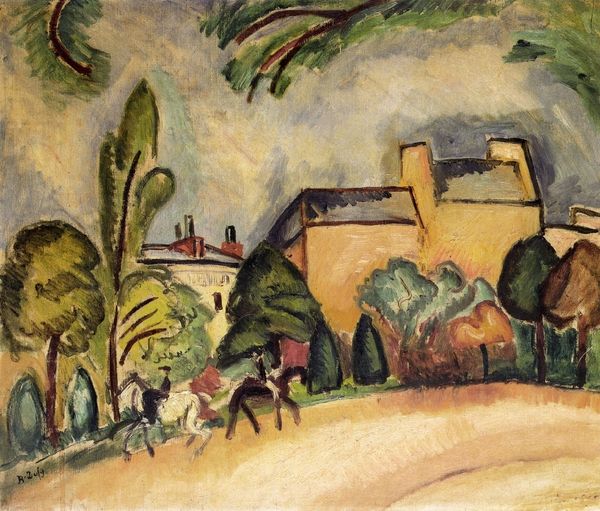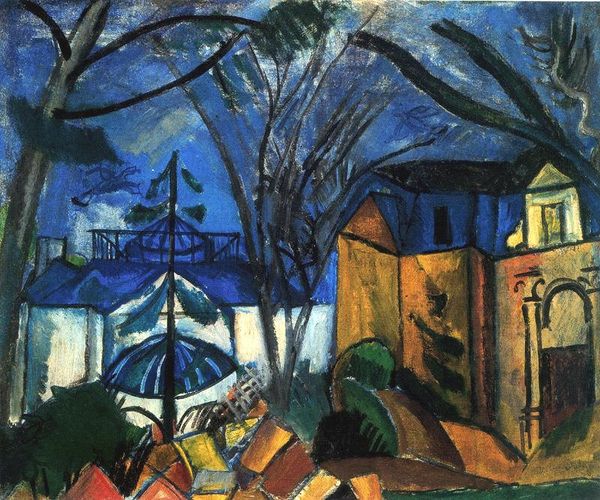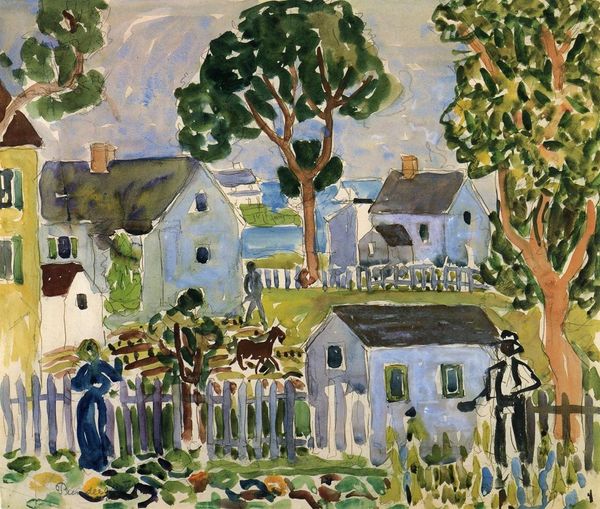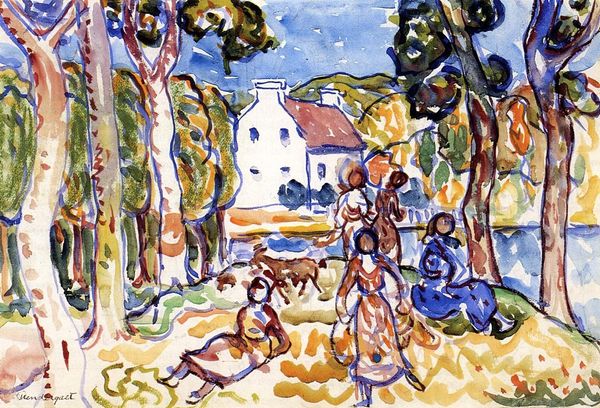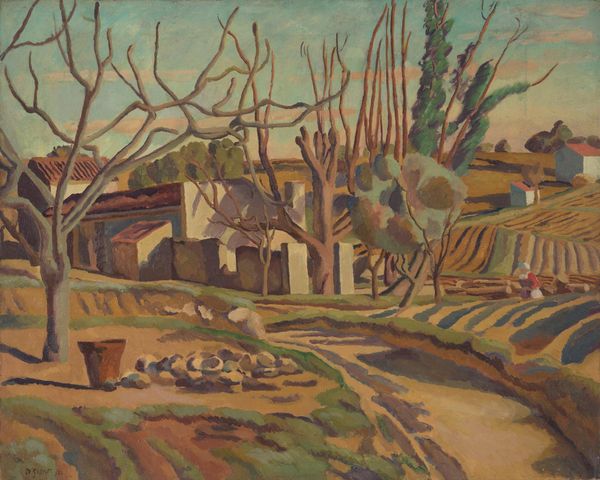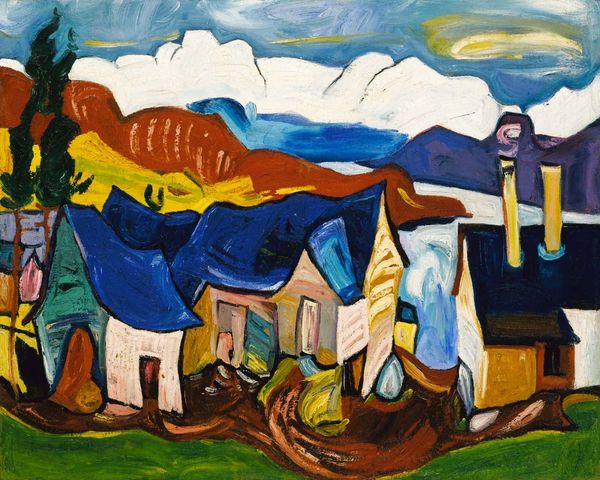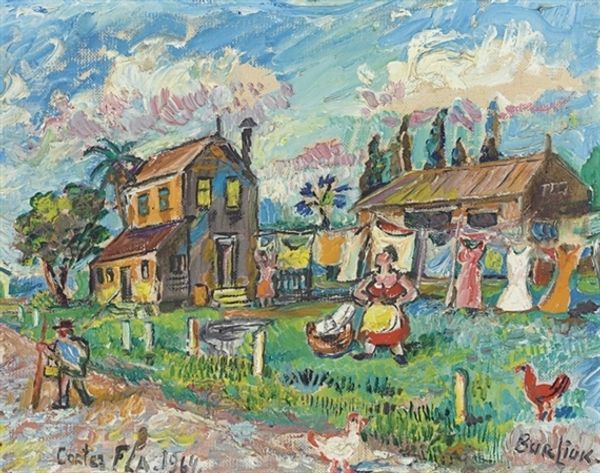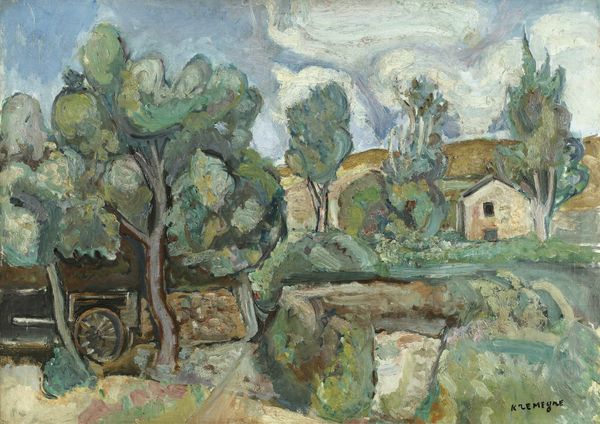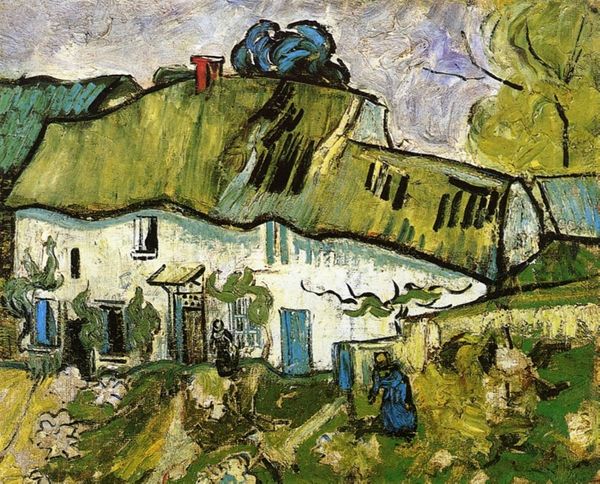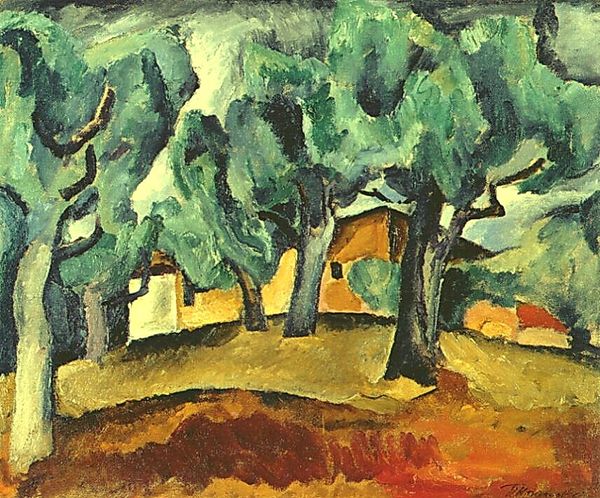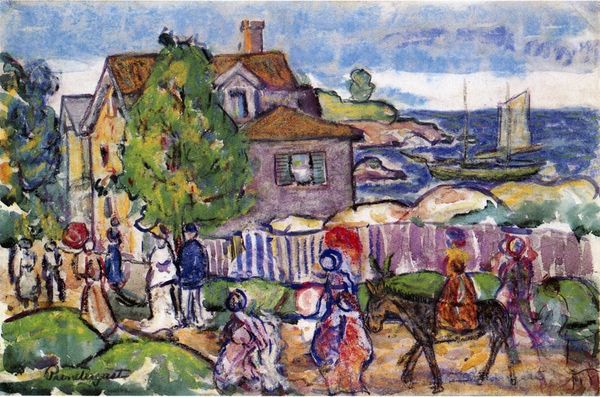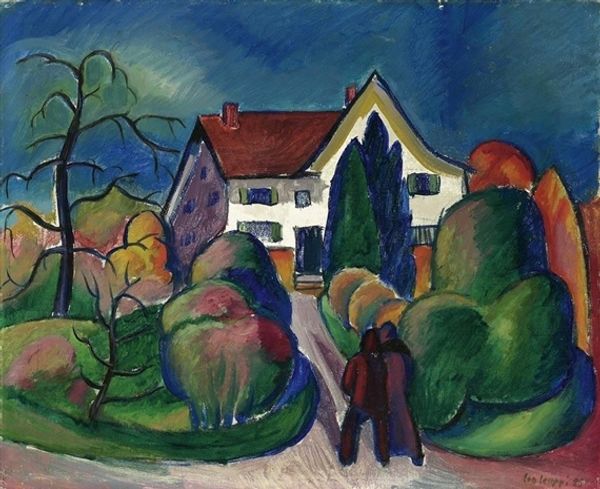
Dimensions: 61 x 73 cm
Copyright: Public domain US
Editor: Raoul Dufy’s "L'avenue du Bois", painted in 1908, is just captivating. The colors, the quick brushstrokes... It really gives you a sense of movement and a real feel for the high society, though a slightly detached perspective. What's your read on this piece? Curator: The way Dufy has manipulated oil paint here is central. Consider the materiality of the urban experience, rendered through this medium. He uses a thick impasto, but almost as if to render a textile. Dufy seems less interested in pictorial illusionism than in the tangible surface, the way the very application of paint echoes the act of observing and consuming the Bois de Boulogne, where he saw the fashionable socialites, horses and carriages going to and fro. Do you see how that flattening effect might play into a larger social critique? Editor: Interesting! I hadn't considered the paint itself as a statement, more that it evokes… lightheartedness? But thinking about it as almost a "masking" of the true society… Curator: Exactly. He uses color and form that mimic popular imagery – postcards, prints – to reflect back the constructed image of leisure and affluence circulated during the time. The speed and style in which he put the oil down reflect the high-paced race after fashion and power, a sort of competition among classes to climb and stay in power, through consumption and labour. Editor: So the way he’s thrown it together reflects its own chaotic system and message about class struggle, perhaps? Curator: Precisely. It really compels us to consider art's production not just as aesthetic exercise but also as entangled with production in broader social structures. Editor: I see, that really helps connect Dufy's artistic choices to the wider social commentary of that era. Thank you for pointing out these intricacies that I was previously unaware of!
Comments
No comments
Be the first to comment and join the conversation on the ultimate creative platform.
